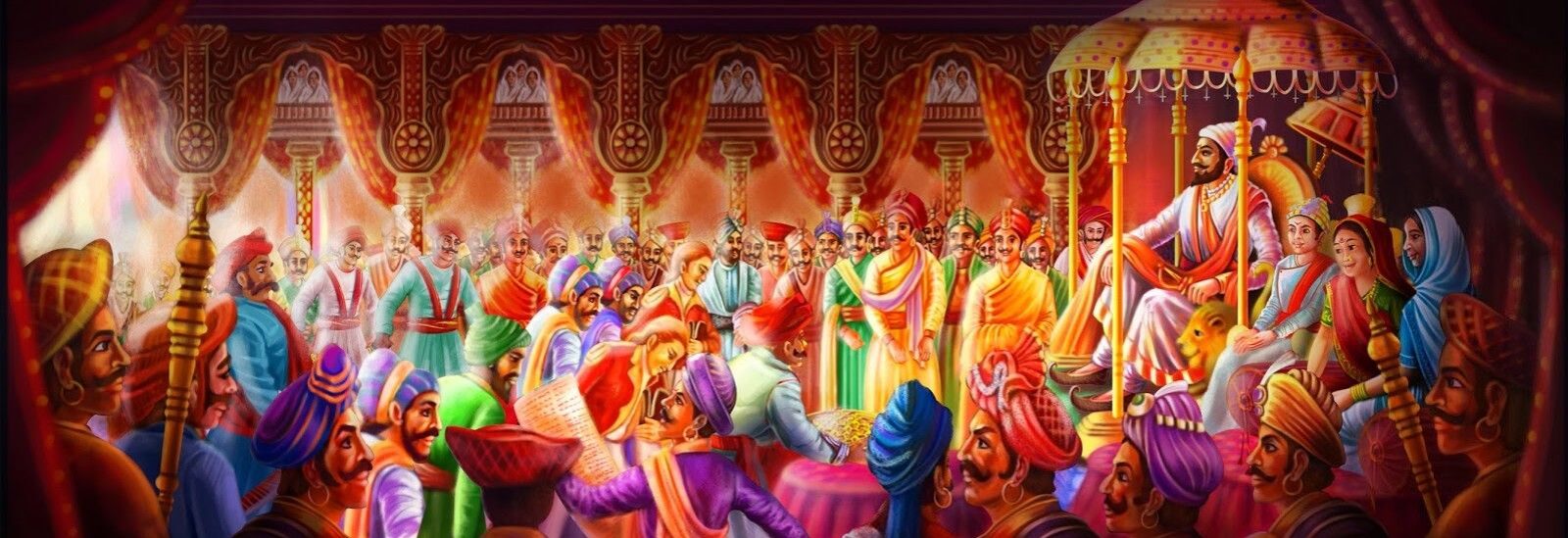Continue reading from Part III
Sarsubha:
Sarsubha is formed by the combination of many subhas. The officer of Sarsubha is called ‘Sarsubhedar’. Sarsubedar was also referred to as the Chief Land Adhikari. There were total five Sarsubhedars during Shiva period.
Subha, Province :
Subha is formed by joining many parganas. The officers of the Subha are called ‘Subhedar’. Subhedar was also called Deshadhikari.
There are eight officers under the Subhedar:
- Diwan
- Mujumdar
- Phadnis
- Sabnis
- Kaarkhanis
- Chitanis
- Jamadar
- Potnis
Also, they were assisted by clerks and members. Each Subhedar is authority of one million to one and half million income of area.
Mahal:
A mahal was formed by combining several parganas. Mahal is the smallest political division. The names of Mahals and Parganas were mostly the same. The officer in the mahal is called Havaldar.
Under the command of the havaldar was a mujumdar as a diwan and a troop of peons. The Havaldar supervised the collection matters, civil-criminal suits and political transactions in the Mahal. Mujumdar used to look after the accounting transactions. The enforcers of the peon detachment were known as Naikwadi. Havaldar see how village and vatandar and pargana vatandar do their work. If the pargana is large, havaldars are appointed in each part of it.
Pargana :
A pargana is made up of many districts/villages. The pargana officers are called ‘Mamaledars’. Kamavisdar was under the Mamaledar. However, historians speculate that the Kamavisdar was an independent officer, manager or occupier. After conquering a new region and annexing it to the Marathi kingdom, the officer who was appointed to settle it was also called Kamavisdar. Kamavisdars and Mamaledars were given chaupdar and divatya as well as afdagi. Monthly salary of Chaupdar, Divtya and Afdagi was respectively Rs. 3/-, Rs. 4/- and Rs. 5/-. But this salary is charged only for eight months. If necessary, a house was also built by the government for the residence of Kamavisdar.
There is Deshmukh-Deshpande to help Kamavisdar. The Deshmukhs should collect the farm produce. Deshpande used to calculate it. Diwan used to look after transactions. Mujumdar used to check the accounts. Documents should be recorded by Phadnis. Statements were written by Daptardar (Clerk). Also, the Potnis used to take care of the collection and the task of the Potdar was to monitor all these processes.
Mamaledar worked to maintain peace in the parganas. He also helped Patil-Kulkarni in recovery. At the beginning of the rainy season, Mamaledar called the Patil; The Patil should inform the Mamaledar about the amount of prescribed land, the amount of bad land, the amount of land given for new cultivation and the estimated amount of recovery. When Patil returned to his village, he encouraged the farmers to cultivate and got them loans and subsidies from moneylenders. At the end of the year, Mamaledar went to inspect his taluk and with the help of Patil-Kulkarni and Subhedar, he made a jamabandi. The Mamaledar used to get a salary of up to five thousand a year. Shibandi was also under his hand. Shibandi means serving officers, generals and other troops etc. Diwan was there to help the Mamaledar. Mujumdar was auditor of accounts, Phadnis for registration of documents/certificates/degrees. Also Daptardar was thereto. Salary of Diwan, Mujumdar, Phadnis, Daptardar and Chitnis was resepctively Rs. 590/-, Rs. 490/-, Rs. 610/-, Rs. 200/- and Rs. 100/- per annum respectively.
or goto Part I, Part II, Part VI, Part VII, Part VIII, Part IX, Part X, Part XI, Part XII, Part XIII, Part XIV, Part XV, Part XVI, Part XVII, Part XVIII


Pingback: Revenue System (Part XI – Tax Structure – Introduction) – Chatrappati Blogging
Pingback: Revenue System (Part III – Tax Collecting Authorities) – Chatrappati Blogging
Pingback: Revenue System (Part V-Procedure after tax collection) – Chatrappati Blogging
Pingback: Revenue System (Part XII – Direct Taxes) – Chatrappati Blogging